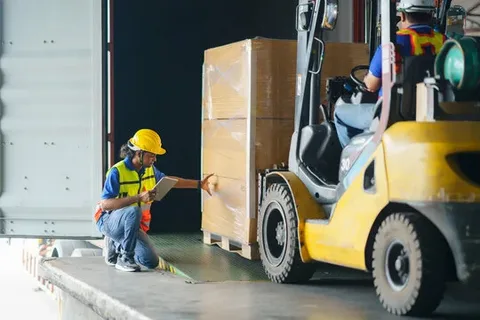Warehouses across India depend heavily on trolley wheels and castor wheels for efficient material handling. Whether moving raw materials, finished goods, or heavy pallets, safe trolley movement is critical. Poorly maintained wheels not only increase downtime but also create safety hazards for workers and risk damage to valuable inventory.
To ensure smooth and safe operations, businesses should implement a structured safety inspection routine for trolley wheels. Below is a comprehensive guideline tailored for Indian warehouse conditions:
-
Daily Visual Inspection
Every shift should begin with a quick inspection of trolley wheels.
Checklist: – Look for cracks, cuts, or flat spots on wheel treads. – Ensure no foreign objects are stuck in the wheel. – Check if the trolley moves smoothly without wobbling.
This quick step can prevent sudden breakdowns during warehouse operations.
-
Check for Load Compliance
Overloading is a major cause of wheel failure in India.
Inspection Steps: – Verify that trolleys are not carrying loads beyond the rated capacity per wheel. – Apply safety factors based on floor conditions (e.g., uneven concrete floors require stronger wheels).
Pro Tip: Always calculate load per wheel (Total load ÷ Number of wheels × Safety factor).
-
Inspect Bearings and Swivel Mechanisms
Bearings ensure smooth rolling, while swivel sections provide maneuverability.
Checklist: – Rotate each caster wheel to check for smoothness. – Inspect for unusual noise or resistance. – Ensure the swivel rotates 360° without obstruction.
Action: Lubricate bearings monthly and replace damaged ones immediately.
-
Brake System Check
Many warehouse trolleys in India use brake-fitted castor wheels for safety on sloped floors.
Inspection Steps: – Test brakes on flat and inclined surfaces. – Check for slipping, incomplete locking, or excessive resistance.
Replace faultyAction: brake components or upgrade to anti-skid polyurethane wheels for better grip.
-
Mounting Hardware and Frame Alignment
Loose or damaged mounting hardware can cause accidents.
Checklist: – Inspect bolts, nuts, and plates for tightness. – Look for signs of rust or cracks in mounting plates. – Ensure trolley frames are not bent, which could misalign wheels.
Action: Use lock nuts or spring washers to prevent loosening due to vibration.
-
Floor Compatibility Check
In India, warehouse floors vary from epoxy-coated surfaces to rough concrete.
Guidelines: – Use polyurethane Wheels or elastic rubber wheels on epoxy/tile floors to prevent damage. – Nylon or cast iron wheels are suitable for rugged concrete. – For outdoor loading areas, use pneumatic or UHMW wheels.
-
Periodic Safety Audits
Warehouses should maintain a schedule for detailed inspections: – Weekly: Clean wheels, check bearings, and inspect brakes. – Monthly: Lubricate bearings and check mounting hardware. – Quarterly: Replace worn-out wheels and perform load-testing.
-
Operator Training
Even the best wheels fail if trolleys are misused. Indian warehouses should train staff to: – Avoid dragging overloaded trolleys. – Push instead of pulling whenever possible. – Report unusual noises or handling difficulties immediately.
Conclusion
By following these safety inspection guidelines, Indian warehouses can reduce accidents, extend wheel life, and maintain smooth operations. Trolley wheels are small but critical components that directly impact workplace safety and efficiency.
Pro Tip for Indian Warehouses: Maintain a stock of replacement caster wheels and hardware so that faulty components can be swapped immediately without halting operations.


